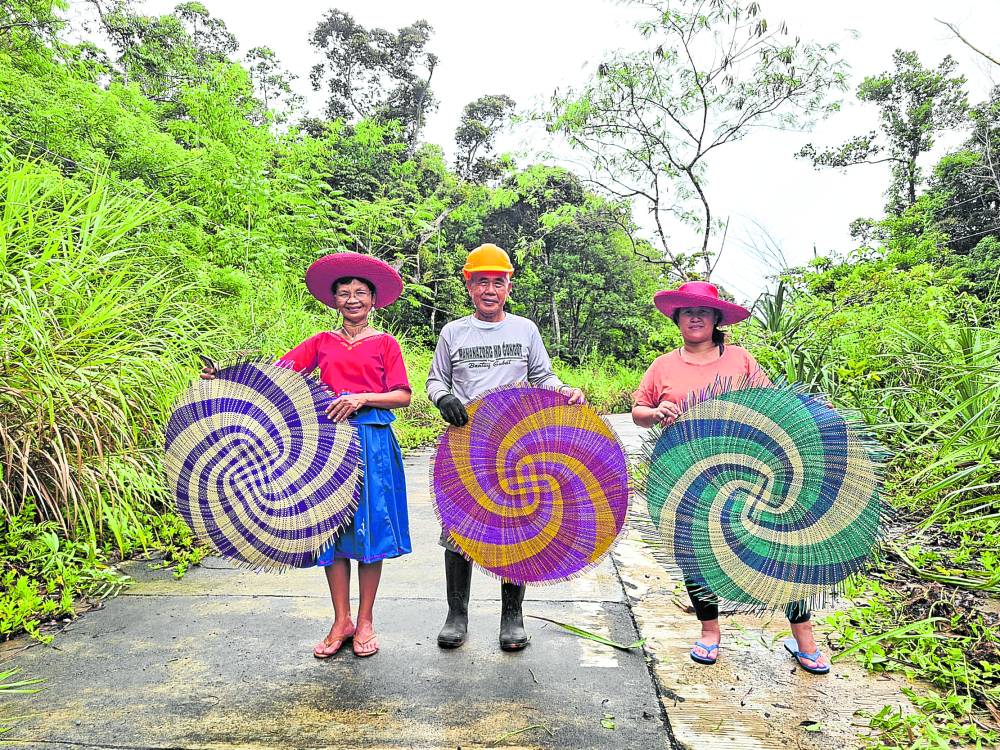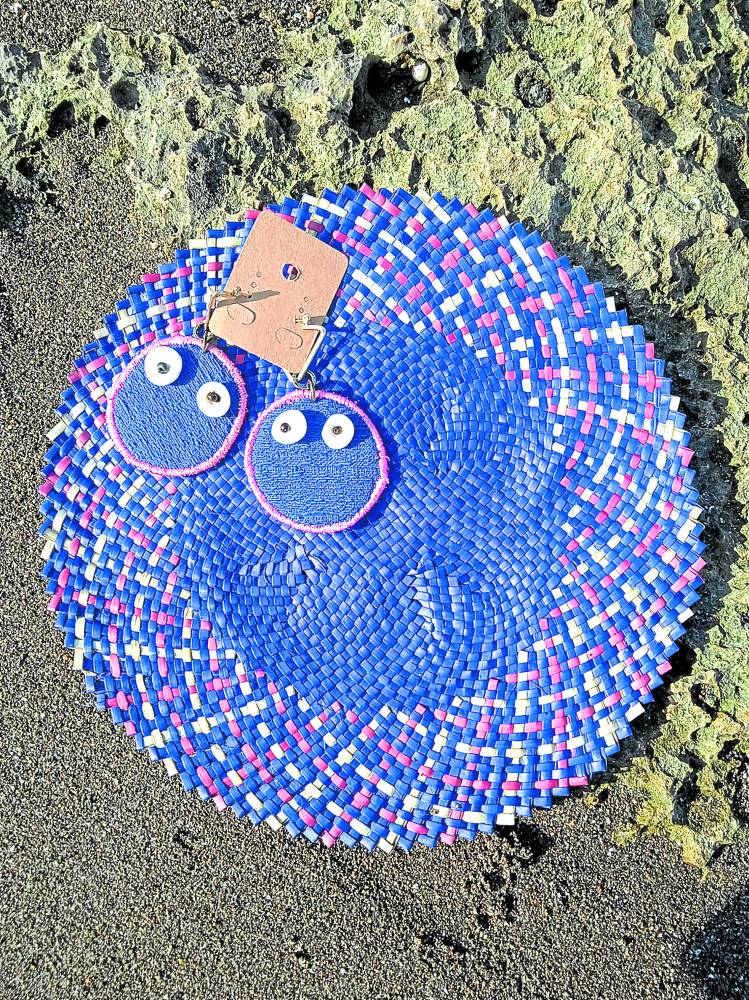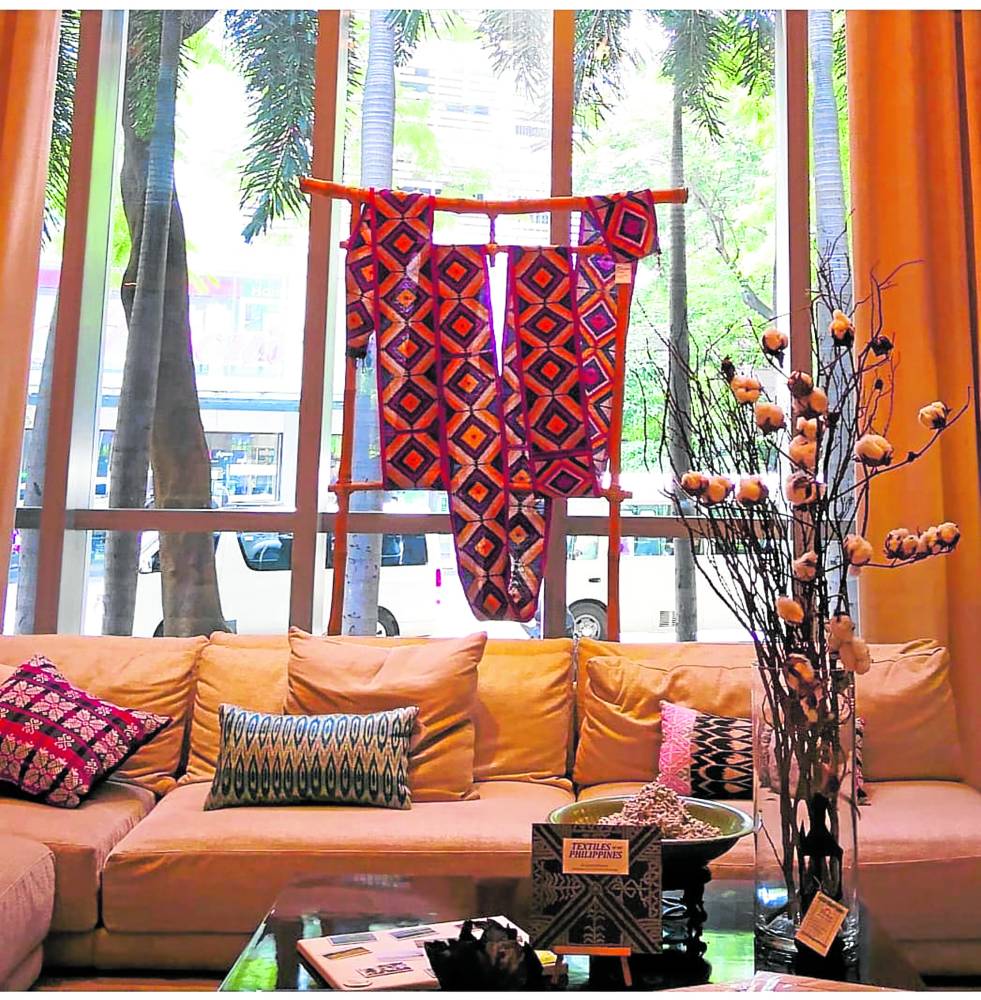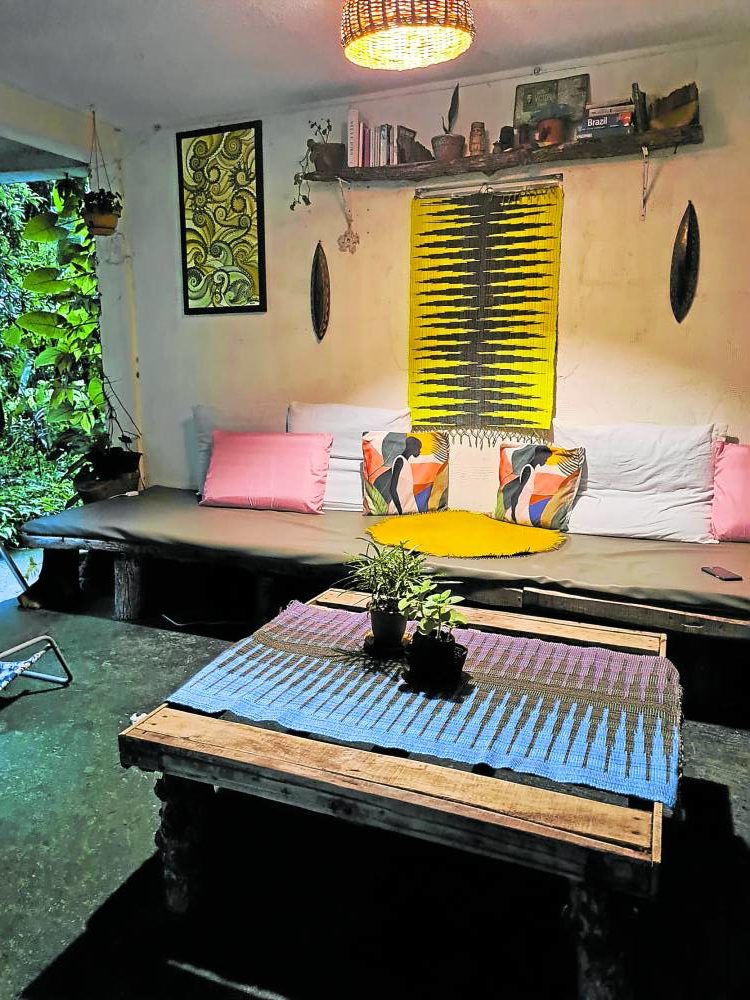
From the organic materials such as screw pine to the synthetic such as plastic, London-trained designer Twinkle Ferraren has been exploring their possibilities with weavers. Colorful weaves and their graphic patterns add texture and dimension to any space, thus creating a more welcoming ambiance. Lately, she has been using sabutan, a species of pandan from the Sierra Madre Mountain Range, and plastic from the Cordilleras.
This year, Ferraren received a grant from the British Council to research on the link between fibers, crafts and weavers. The Forest Foundation, a nonprofit organization that provides assistance to forest protection, then facilitated the designer’s visit to the Sierra Madre in Aurora. She met the Egongot tribespeople who cultivated the sabutan from their ancestral domain, and learned their skills from their forebears.
Swirl patterns

In the old days, sabutan fibers were woven into birds and airplanes for children, and curtains, mats and flowers for the home. Entrepreneurs saw its potential and had it dyed and processed to create fashion accessories for export.
“When the Egongots are not weaving, they become forest rangers who conserve the area,” she says. To help the Dimasalang Egongot Tribe Farmers and Weavers Association Inc. earn additional income, Ferraren sells their round woven mats in her e-commerce site Style Isle.
Mats with swirl patterns are their signature style. Ferraren observes that their colors are inspired by foods such as dark chocolate and mocha. Some mats reference sapin-sapin colors and ube and cheese. These mats are hung on walls while the wider mats spruce up floors.
In Baguio, Ferraren conducted workshops organized by the Department of Science and Technology and the Baguio Arts and Crafts Collective Inc. She trained the weavers on developing original designs and color combinations and executing them on their weaves.
A student proudly showed how she applied Ferraren’s teachings on her woven plastic products. The designer suggested using bigger looms and stronger colors to make the designs more marketable. Valued for their water resistance, the plastic mats have been selling among clients with beach properties.
‘Fibre Filippine’

With a career spanning 23 years, Ferraren took up short courses in pattern making at Slim’s. Moving to London in 2003, she studied at Central Saint Martins (CSM) where she learned how to build a fashion collection, styling, fashion journalism and textile techniques. She interned under Lesley Mobo, then designer for the Jasmine de Milo label in Harrod’s. Ferraren returned to CSM in 2007 to study swimwear and lingerie design.
She collaborated with Freeway from 2009 to 2011, incorporating artisanal techniques such as handpainting, screen-printed tattoos and weaving, crochet and macrame to its swimwear line.
Like many Filipino designers looking to their culture for inspiration, Ferreran researched and experimented with local weaves. In October 2013, she was one of the six designers featured in “Fibre Filippine,” a fashion show showcasing piña and abaca, organized by the Philippine embassy in Rome.
Although the Filipino designers received inquiries from the international audience, they couldn’t follow up any business.
In November 2013, Supertyphoon “Yolanda” impacted the Visayas, including the weaving communities. Ferraren, who worked with piña weavers in Aklan, realized that one of the challenges that hindered the growth of Philippine weaves was the lack of sustainability due to environmental issues.
Her research grant examines the lack of an efficient agricultural system that would produce and harvest the plants and their fibers, and gaps in the supply chain.
War was also another obstacle when Ferraren worked with the Tausugs. From 2014 to 2017, the Muslim-Christian strife in Sulu resulted in blackouts that delayed weaving, communication and delivery. Her partner weavers, the T’Bolis in Lake Sebu, were likewise affected by the wars. She recalled how the T’bolis pleaded with her to sell their products in Manila since visitors were afraid to fly to Mindanao.
Her mission

Ferraren has been a resource person on Philippine weaves, as she is invited to give lectures and hold workshops. In 2015, she co-curated the Habi Philippine Textile exhibit with the late gallerist Norma Liongoren at the Philippine embassy in Washington, D.C.
Upon settling in Baguio in 2019, she was hired by the Philippine Commission on Women as a designer-consultant for artisan communities in the Cordilleras.
“My life today revolves around training, developing, setting up pop-ups and attending to orders since I’m doing slow fashion,” she says.
Come Nov. 20, Ferraren will set up the Style Isle stall at the Department of Foreign Affairs’ International Bazaar at the World Trade Center. “Style Isle focuses on the products of indigenous communities. We share their stories and weaving practices.”
In December, the designer will present her namesake brand at Presente by ArteFino, the movement’s December edition, at Power Plant Mall. “The Twinkle Ferraren line features clothing and accessories with manipulation, beadwork and embroidery, done in Manila and Bulacan workshops,” she says.
On her mission to support local weaves, she explains, “The weaves bring culture and something handmade to your space. Since everything now is mechanized, an artisanal product lends a homey feel. It exudes the heart and soul of the person who created it.” —CONTRIBUTED INQ












































